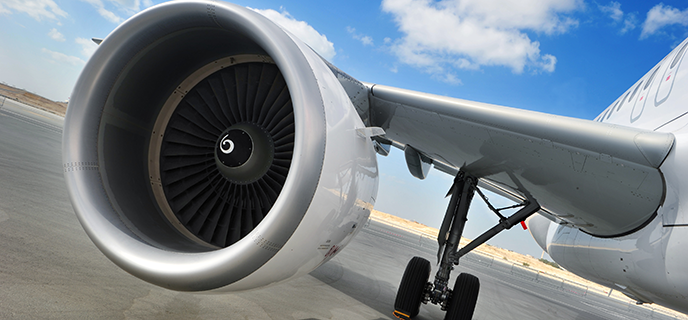EASA Delegation Processes (FAA – EASA Differences)
Whilst both the EASA and FAA system essentially demonstrate compliance with the same fundamental requirements which we understand as Certification Specifications in the EASA system. There are fundamental differences in the oversight process.
EASA Part 21 Subpart J – Concerns Design Organisation Approval (DOA) The privileges of the DOA, How the Design Assurance System functions. Requires a Design Organisation Handbook, consideration of the relationship with the Production Organisation Approval (POA)
FAA Part 21 Subpart J – Delegation Option Authorization Procedures – Concerns procedures for Obtaining and using a delegation option authorization for type, production, and airworthiness certification for:
– Small airplanes and small gliders;
– Commuter category airplanes;
– Normal category rotorcraft;
– Turbojet engines of not more than 1,000 pounds thrust;
– Turbopropeller and reciprocating engines of not more than 500 brake horsepower;
– Propellers manufactured for use on engines covered by this paragraph Issuing airworthiness approval tags for engines, propellers, and parts covered by this section.
FAA & EASA Direct versus Indirect
The FAA system is based on Direct Inspection and oversight and in addition uses the services of Designated Engineering Representatives (DER) and Designated Airworthiness Representatives (DAR)
How does Direct Inspection Work ?
The system of direct inspection by the FAA requires , a significant number of inspectors who are required to conduct systematic direct inspections of the products, the maintenance work and the performance of the personnel (either direct employees of the Authority or independent designees charging for their services)
How does Indirect approval work ?
EASA Design Organisation Approval (DOA) is based on the principle of delegation whereby the various organisations are issued with an approval that allows them certain privileges Organisation approval – The Authority employs a number of experts to audit the organisations (manufacturers, operators, maintenance centres, training centres) and to sample by audit & Inspection the organisations quality system and processes
Areas reviewed include surveillance of the products, together with the performance of the organisations system to oversee and manage the competence of the personnel nominated within each organisation.
Part 21 organisations obligations
To establish a ” qualified framework ” for the various activities related to the compliance demonstration with applicable requirements.
To set the basis to enable EASA to accept statements, from DOA organisations, that the regulations have been complied with.
a) The necessary competent management,
b) The allocation of tasks and responsibilities,
c) The Internal procedures together with adequate resources necessary for the accomplishment of the activities defined in the scope of the DOA
Part 21 Subpart G – Production Organisation Approval
Part 21 Subpart J – Design Organisation Approval
Design Assurance System
A “Design Assurance System” shall ensure –
The Compliance Verification with the applicable type-certification and environmental protection requirements
The Proper discharge of responsibilities within the organisation
The independent monitoring of the performance of the organisation and that the need for effective corrective action is identified and carried out.
The independent checking of the showings of compliance Part 21 Subpart J “Design Organisation Approval” is a pre-requisite for all Part 21 Subparts dealing with approvals of design including continued airworthiness activities:
Type Certificate (TC) and restricted TC – (Subpart B)
Supplemental Type Certificate (STC) – (Subpart E)
Changes to TC and STC (Subpart D)
Performance of Repairs, (Subpart M)
ETSO authorisations (Subpart O)
To assure confidence that the Design of a Product complies with the applicable requirements and this is based on both the approval of the organisation together with compliance and certification of the design of products.
The use of Design Organisation Approval allows effective use of EASA resources
The Primary Elements of a Design Organisation
Quality System is the means to assure the quality of the design organisation & has the objective to validate and verify compliance with the applicable requirements.
In addition to provide for the control of privileges and permits together with the issue of Statements of Compliance.
The Quality system shall cover the control and supervision of the design covered by the application, incl. partner organisations.
Manual or Exposition (Handbook) – Identifies the Organisation, procedures, and products or changes subject to design as well as any subcontractor or partner organisations. Shall be available throughout the organisation and shows all nominated management staff and other relevant persons
Competent Personnel – Requires sufficient number of experienced staff – appropriate authority to discharge all nominated responsibilities and obligations. Accommodation & Facilities must be adequate for purpose.
Terms of Approval – Define the scope of the intended design work, as well as categories of products, parts and appliances for which DOA is applicable. In addition identifies all activities and other duties to show compliance with Airworthiness and Environmental Protection requirements. Shall identify list of TC products or list of ETSO approvals
Privileges – Submittal of Compliance data in support of Subpart B,E, and/or O
Classification of minor v.s. major regarding changes and / or repairs
Approval of minor changes and minor repairs by the DOA holder and also major repairs by the (S)TC DOA holder
Submittal of compliance data to the Agency for approval of major changes/repairs.
To issue Permits to Fly per EASA Form 21b in coordination with EASA for Prototype aircraft
Issue of SB’s and AFM revisions under the DO Approval
Sofema Aviation Services provides EASA and GCAA compliant Part 21 / CAR 21 training for details see www.sassofia.com or email office@sassofia.com




